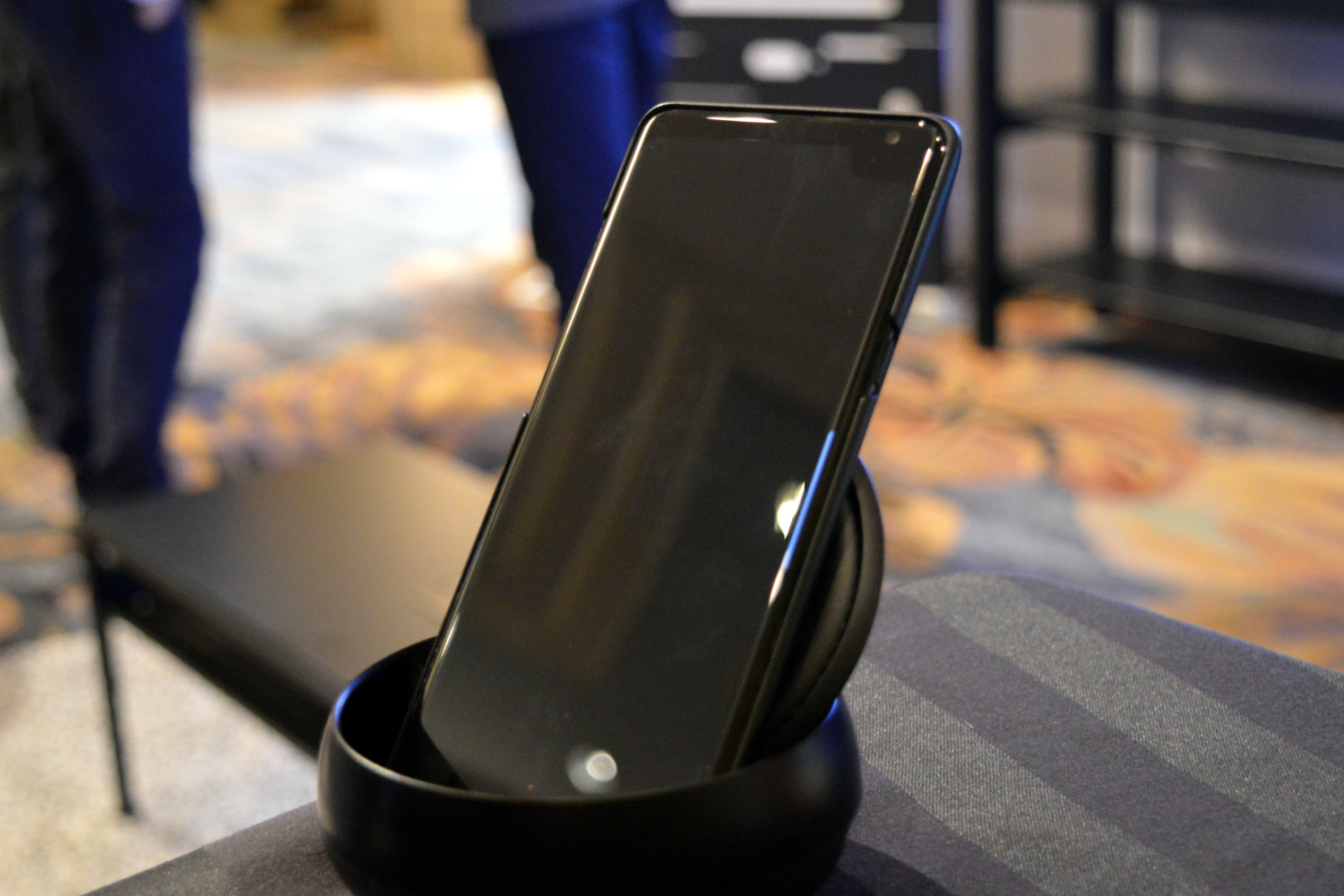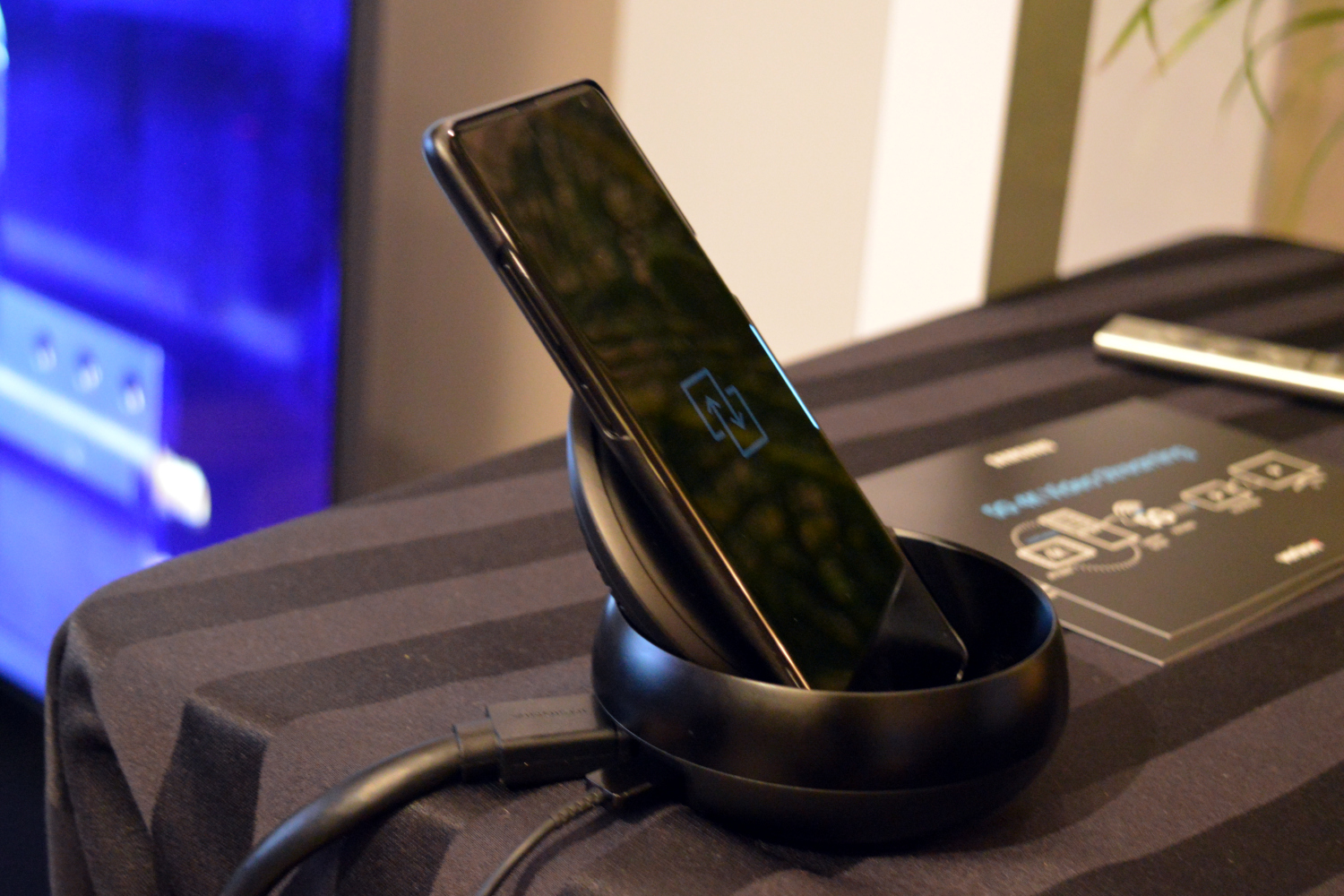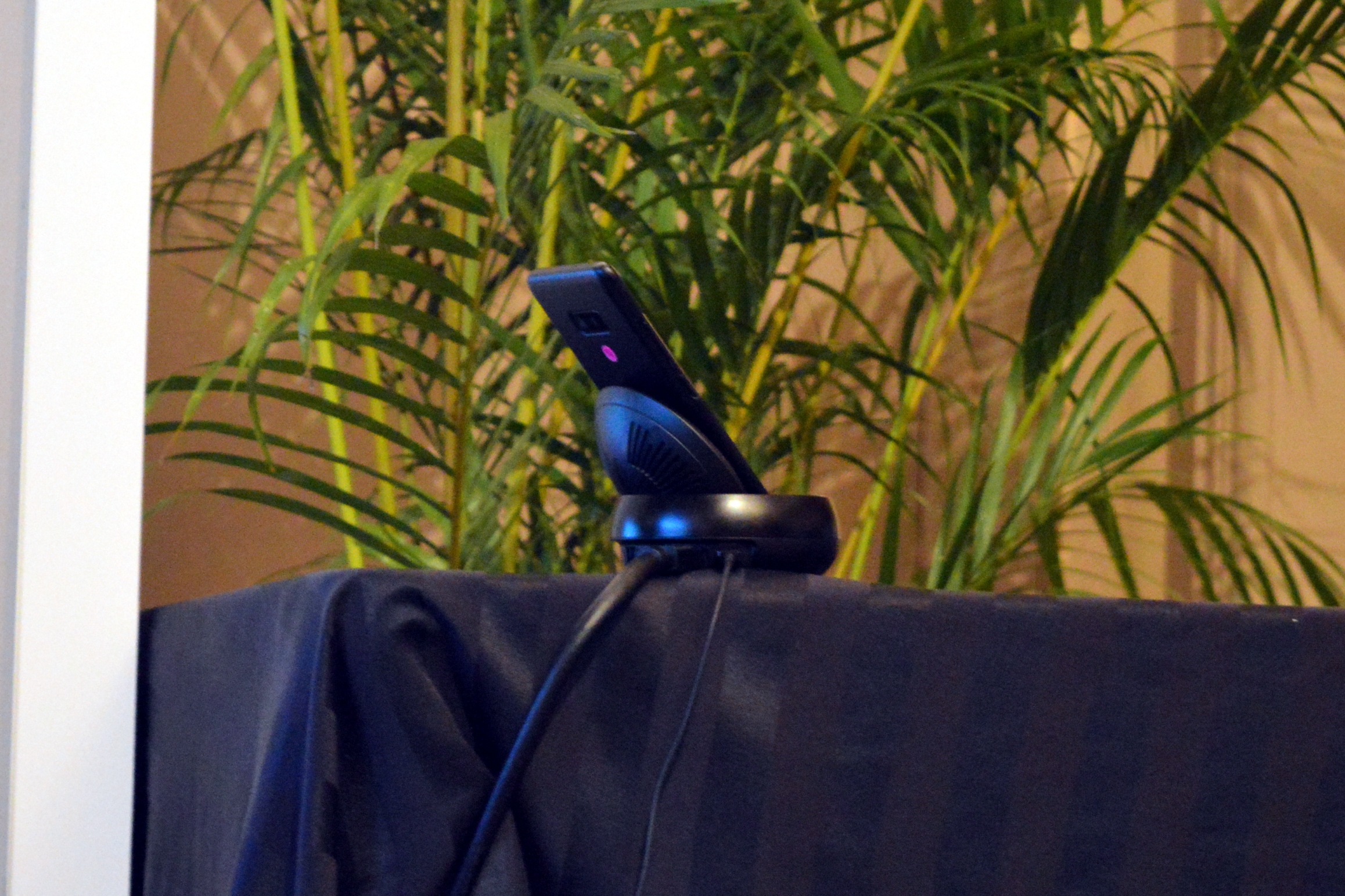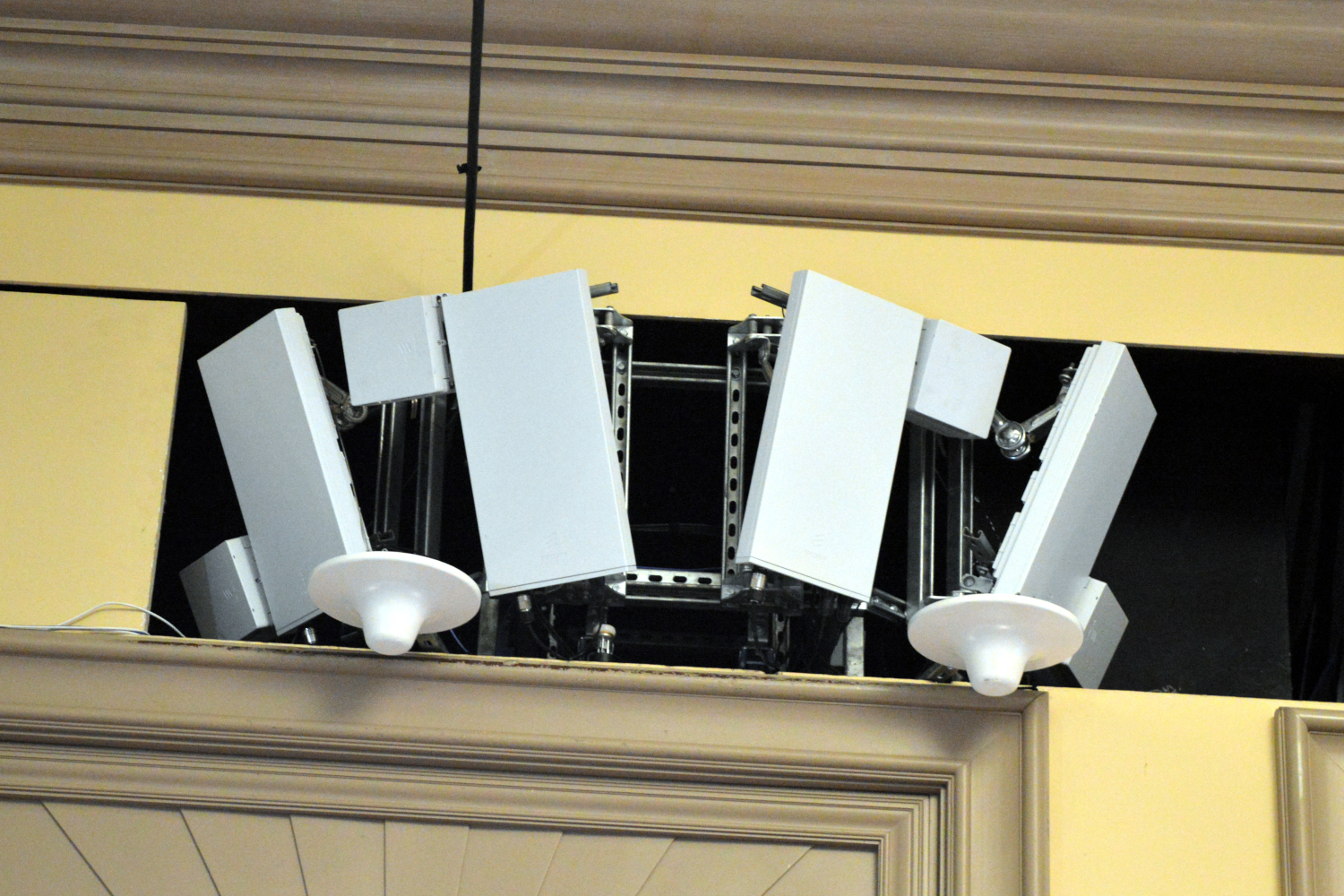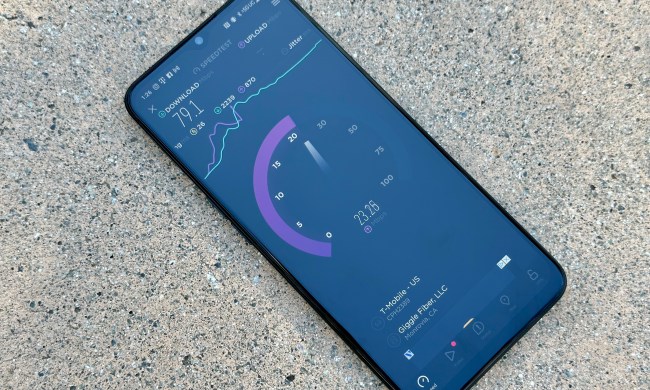After years of much hoopla and fanfare, we’ve finally had a glimpse of what could be the first 5G smartphone. At Qualcomm’s annual Snapdragon Summit, Samsung showed off its 5G concept phone in a heavily controlled demo, and it could very well be next year’s Galaxy S10. Here’s what it’s like.
5G has a lot of caveats
Before we start, what exactly does a 5G smartphone entail? It’s the next step after 4G LTE, so you’re going to get gigabit download speeds on your smartphone, and that will change everything. It doesn’t just mean your phone will be able to download 4K movies incredibly fast, but it means a whole new wave of connected cars, appliances, and devices talking to each other thanks to the super low latency 5G brings. It has the potential to dramatically change industries. There are a lot of caveats, though. 5G won’t be blanketed coverage across the U.S. like 4G LTE. Instead it will utilize smaller cell sites, and at first that will mean mere pockets in select cities will be the only place you can get 5G connectivity. You will fall back to 4G LTE quite often. 5G can also be easily blocked, and may not work indoors, so carriers will need separate solutions for the network to work everywhere you go. It’s going to take quite a few years for 5G to just work everywhere.
The phone streamed 4K movies from Netflix, without a single stutter.
Onto our demo with Samsung, you should know there were a number of conditions we were told before we saw the device. Samsung’s 5G phone was connected to Verizon’s test 5G network in Hawaii, and we were able to watch it stream 4K video from the web and display it on a 4K TV. Samsung told us we couldn’t touch the phone because it was positioned in such a specific way to connect well to the 5G network. We couldn’t even walk behind the phone, as we could have caused an interference. These are a few caveats of 5G we mentioned previously, but ideally when the network is in place you won’t be seeing a lot of these issues.

Samsung was quick to note this is not final hardware. Regardless, the phone looks sleek, though it surprisingly came with a notch — a design Samsung so far has strongly opposed. But this is no ordinary notch. It was located on the right-hand corner of the phone, not in the usual top center of the display. We don’t think this notch will end up on the final design of the phone — Samsung’s likely just hiding the Infinity-O display, where a floating camera sits surrounded by the screen (kind of like a hole-punch in a piece of paper). There’s a dual-sensor camera on the back, though we weren’t able to get a photo of it, as well as a headphone jack. Under the hood, the phone features the newly-unveiled Qualcomm Snapdragon 855 chipset.
So what was the demo? The phone streamed 4K movies from Netflix, without a single stutter, and it was able to output the video to a connected 4K TV. It’s impressive, because streaming 4K content on a cellular connection today isn’t the smoothest experience. But sadly, that’s more or less the extent of what we were able to see, which is a little disappointing. It does raise a few questions, though. Considering carriers currently limit cellular video streaming to 480 or 720p, will 5G mean we won’t see these kinds of limits? Or does it just mean 5G will cost far more than current data plans? Carriers aren’t sharing details on this yet, so we’ll have to wait and see.
A 1GB file took around 19 seconds to download, which equates to a data speed of around 0.42Gbps
The phone didn’t seem particularly thick, which is surprising. We weren’t able to hold it, but we were expecting the inclusion of 5G tech to mean a thicker phone. We’ll have to wait and see exactly whether size has changed when Samsung launches this phone next year. Other details about are completely unknown. We have no clue what the other specifications are or how big the battery is (5G is reportedly expected to be a battery hog).

Samsung’s 5G demo wasn’t the only phone on show at the event. Motorola showed off the upcoming 5G Moto Mod for the Moto Z3 smartphone (available now), and like the Samsung phone, it couldn’t be moved for network connectivity reasons. This demo also had strict conditions. A Motorola-built app downloaded files of difference sizes. A 1GB file took around 19 seconds to download, which equates to a data speed of around 0.42Gbps — far less than that promised 1Gbps+ speeds we’re hoping to get when 5G fully launches. It’s still incredibly fast, especially considering today’s download speeds, but it’s just not as surprising.
5G is exciting, but as we’ve seen in Hawaii, there are a ton of caveats and unanswered questions. Samsung said it’s launching a 5G-enabled phone in the first half of 2019 in partnership with AT&T, Sprint, and Verizon, so we won’t have to wait too long to see all of this in action in the real world — that is, if you have 5G network support near you.
